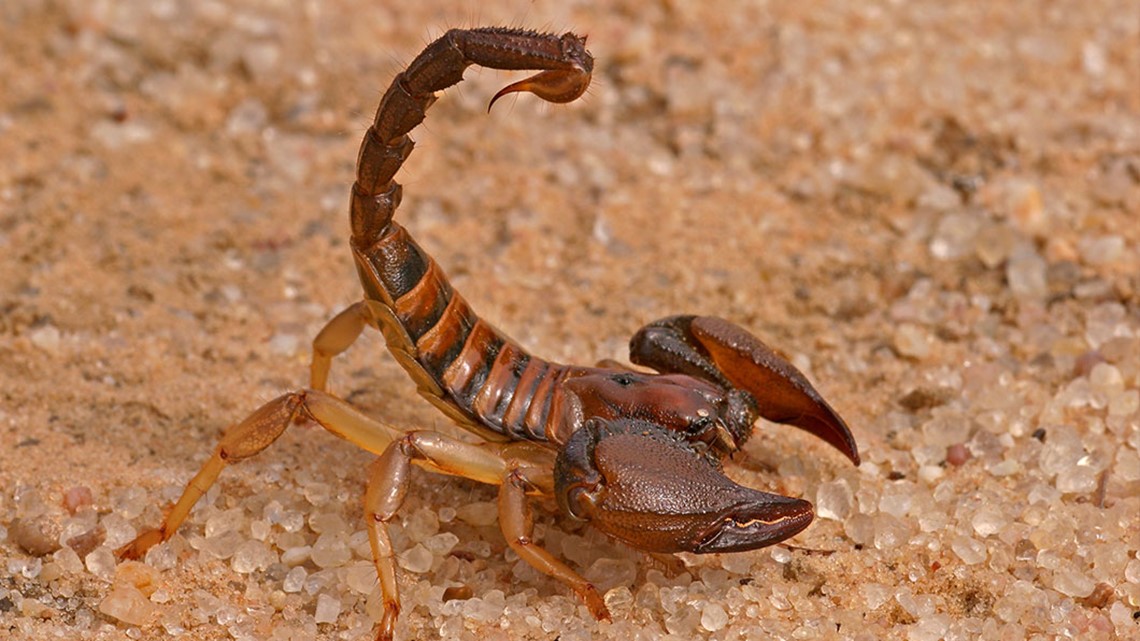Texas, known for its vast landscapes, rich history, and diverse ecosystems, is a state of natural beauty and adventure. However, amidst the charm and allure of the Lone Star State lies a hidden danger in the form of its wildlife. While many animals in Texas are harmless and add to the state’s natural beauty, there are some creatures that pose significant threats to humans. In this article, we will explore the five deadliest animals in Texas, providing detailed information on each, including their habitats, behaviors, and what makes them so dangerous. All the information in this article is based on the report by Texas Monthly.
Western Diamondback Rattlesnake

Description and Habitat
The Western Diamondback Rattlesnake (Crotalus atrox) is one of the most notorious snakes in Texas. Recognizable by the diamond-shaped patterns on its back and the distinctive rattling sound it makes when threatened, this snake is a symbol of danger in the American Southwest. They inhabit a wide range of environments, including deserts, grasslands, and rocky hillsides, making them one of the most widespread venomous snakes in Texas.
Venom Potency and Effects
The venom of the Western Diamondback Rattlesnake is a potent hemotoxin, which means it destroys red blood cells, disrupts blood clotting, and causes tissue damage. Symptoms of a bite include severe pain, swelling, bruising, and in severe cases, it can lead to organ failure or death if not treated promptly.
Statistics on Bites and Fatalities
According to the Texas Parks and Wildlife Department, rattlesnake bites in Texas are not uncommon. Each year, hundreds of people are bitten by rattlesnakes, but fatalities are rare due to the availability of medical treatment. On average, around 1-2 fatalities occur annually due to rattlesnake bites in Texas.
Safety Tips and First Aid
To avoid rattlesnake bites, it is essential to stay on designated trails, wear thick boots, and be cautious when stepping over logs or rocks. In case of a bite, keep the affected limb immobilized and lower than the heart, and seek immediate medical attention. Do not attempt to suck out the venom or use a tourniquet.
Texas Coral Snake

Identification and Habitat
The Texas Coral Snake (Micrurus tener) is a brightly colored snake with distinctive red, yellow, and black banding. Often mistaken for non-venomous species like the milk snake, the coral snake’s venom is highly toxic. These snakes are typically found in wooded, sandy, and marshy areas across eastern and southern Texas.
Venom Characteristics and Impact
The venom of the Texas Coral Snake is a neurotoxin, which affects the nervous system, leading to paralysis and potentially respiratory failure. Unlike the rattlesnake, coral snake bites can be less painful initially, but their venom is more dangerous and requires prompt medical treatment.
Incidence of Bites and Medical Treatment
Coral snake bites are relatively rare compared to other venomous snakes in Texas, with less than 100 cases reported annually. However, the venom’s potency means that any bite should be treated as a medical emergency. Antivenom is available and is the most effective treatment.
Prevention and Emergency Response
To prevent coral snake bites, avoid handling unknown snakes and be cautious in their natural habitats. If bitten, seek medical help immediately and try to remain calm to slow the spread of venom.
American Alligator

Physical Features and Distribution
The American Alligator (Alligator mississippiensis) is a large reptile found primarily in the southeastern United States, including eastern Texas. These formidable creatures can grow up to 13 feet in length and weigh over 1,000 pounds. They inhabit freshwater environments such as swamps, rivers, and lakes.
Behavior and Potential Threats to Humans
Alligators are generally shy and avoid human contact. However, they can become aggressive if they feel threatened, especially during mating season or when protecting their nests. Alligator attacks on humans are rare but can be fatal due to their powerful jaws and sheer size.
Historical Incidents and Statistics
In Texas, alligator attacks are infrequent but have occurred. The Texas Parks and Wildlife Department reports that there have been a handful of alligator-related fatalities over the past few decades. Most incidents involve people swimming in or near alligator habitats.
Safety Measures and Guidelines
To stay safe, avoid swimming in areas known to be inhabited by alligators, especially at dusk or dawn when they are most active. Keep a safe distance from the water’s edge and never feed alligators, as this can lead to aggressive behavior. If you encounter an alligator, back away slowly and do not provoke it.
Black Widow Spider

Appearance and Habitat
The Black Widow Spider (Latrodectus mactans) is easily identifiable by its shiny black body and the distinctive red hourglass shape on its abdomen. These spiders prefer dark, secluded areas such as woodpiles, garages, and sheds, making them common in both urban and rural areas of Texas.
Venom Toxicity and Symptoms
Black widow venom is a neurotoxin that can cause severe pain, muscle cramps, and spasms. Symptoms usually appear within a few hours of a bite and can include nausea, difficulty breathing, and muscle rigidity. While bites can be extremely painful, fatalities are rare, especially with prompt medical treatment.
Bite Statistics and Medical Advice
According to the American Association of Poison Control Centers, several thousand black widow bites are reported annually in the United States, with a significant number occurring in Texas. Despite their venom’s potency, deaths from black widow bites are extremely rare due to the availability of antivenom and supportive care.
Preventive Actions and First Aid
To avoid black widow bites, wear gloves when handling firewood or working in areas where spiders may be present. Regularly inspect and clean potential hiding spots around your home. If bitten, clean the bite area, apply ice to reduce swelling, and seek medical attention promptly.
Kissing Bug
Description and Habitat
The Kissing Bug (Triatoma spp.), also known as the assassin bug, is an insect that has become infamous for transmitting Chagas disease. These bugs are found throughout Texas, particularly in rural areas, and are known for biting humans around the mouth and eyes while they sleep.
Disease Transmission and Health Risks
Kissing bugs carry the parasite Trypanosoma cruzi, which causes Chagas disease. This disease can lead to severe cardiac and digestive complications if left untreated. Symptoms include fever, fatigue, body aches, and swelling at the infection site. Chronic cases can result in heart failure or intestinal problems.
Cases of Chagas Disease in Texas
According to the Texas Department of State Health Services, Chagas disease is a growing concern in the state, with several hundred cases reported annually. Most cases are associated with rural areas and substandard housing conditions where kissing bugs thrive.
Protection and Response Strategies
To reduce the risk of kissing bug bites, use insect repellent, install screens on windows and doors, and eliminate potential bug habitats around your home. If you suspect you have been bitten by a kissing bug, seek medical attention for testing and treatment of Chagas disease.
Conclusion
Texas is home to a fascinating array of wildlife, but it also harbors some of the most dangerous animals in the United States. Understanding the risks posed by the Western Diamondback Rattlesnake, Texas Coral Snake, American Alligator, Black Widow Spider, and Kissing Bug is crucial for ensuring safety while exploring the state’s natural beauty. By being aware of these dangers and taking appropriate precautions, residents and visitors alike can enjoy Texas’s diverse ecosystems with confidence and care. Always remember that while these animals can be deadly, they play vital roles in their ecosystems, and respecting their space is key to coexisting safely.



